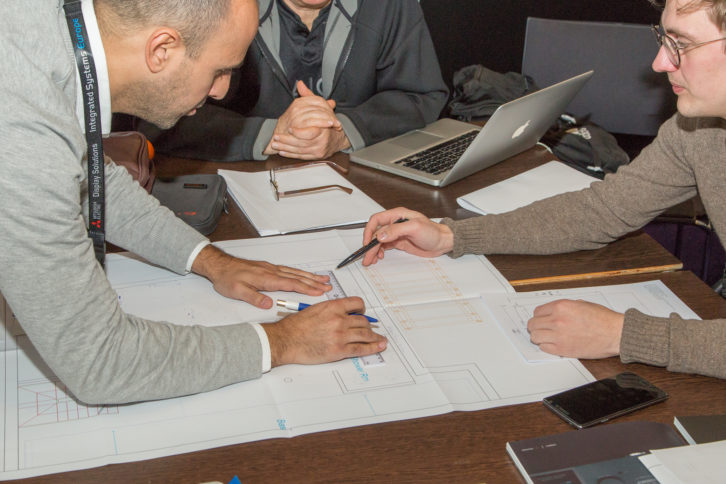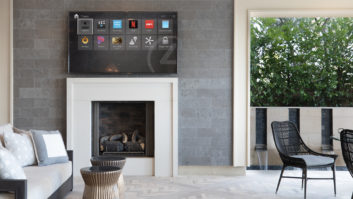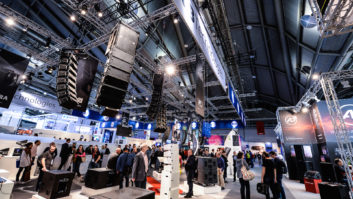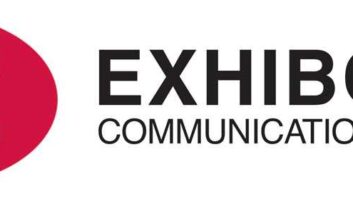
Having previously outlined the efforts of AVIXA and CEDIA, here we look at how training offerings are adapted for the fast pace of change in the AV industry.
As the AV industry has expanded, the technology available across both pro and residential has evolved as to be almost unrecognisable from a few years ago – fuelling the growth of the industry further. This, in turn, has created further challenges for professional development and the training required.
“With the AV market continually evolving, it’s important for professional development to reflect this and stay ahead of developments,” explains Matt Nimmons, managing director, CEDIA EMEA. “We are always seeking to better understand product roadmaps and how CEDIA education can advance awareness, understanding, and implementation of these new technologies.”
When new technologies and requirements arise, CEDIA integrates them into its education offering. “Our training is not just about new technologies, design and integration skills. We also offer comprehensive business training to ensure that our members can grow their companies successfully in the market. Our CEDIA education team is structured to balance the programme, to meet the needs of the market and our members.”
According to Amanda Beckner, CTS, AVIXA vice president of learning, AVIXA doesn’t overstate the effect changes in technology have upon their offer, or get intimidated by them. “Meaningful professional development that leads to better processes, designs, installations, and quality customer experiences isn’t necessarily dependent on technology. Sightlines are still sightlines. Acoustics are still acoustics. If technology change means that the work changes, then the curriculum evolves.
“For example, when the industry shifted to network-based systems, we had to include professional development that related long-practiced, decision-making paradigms in systems design to slightly different paradigms for networked systems design. Along those lines, curriculum changes when new efficiencies are developed into product sets making parts of existing processes irrelevant.”
“The content needs to be relevant and allow attendees to build on the foundation of knowledge that they already have”
Beckner says that many changes to how AV professionals work don’t occur when the technology changes, but instead when industry standards are developed. “For example, for decades, AV system designers used a best practice known as the 4, 6, 8 rule to determine screen size and viewing distance. While that practice worked for 4:3 displays, it does not hold true for 16:9. AVIXA’s Display Image Size for 2D Content in Audiovisual Systems standard offers a tested and validated strategy for today’s systems.”
For courses to be successful, there should be a mix of expert teaching and practical, hands-on learning, allowing integrators to take the most away from training sessions. “The content needs to be relevant and allow attendees to build on the foundation of knowledge that they already have,” states Nimmons. “We want all delegates to walk away feeling better equipped than when they arrived, and enriched by the training experience.”
CEDIA courses are developed by a global council of subject matter experts to provide delegates with the knowledge and skills to succeed in the industry. From newcomers looking for an entry point, to seasoned industry professionals looking to increase their skills, it’s important to have something for everyone when it comes to professional development. “From concept through execution, the content needs to be about the work of the AV professional – scoped by AV professionals who do the work, and reviewed and validated by them,” says Beckner.
“We’re finding that it’s important to build in opportunities for the learner to personalise the training experience, and to engage in peer-to-peer learning, which not only broadens the perspective of all learners, but also fosters community in the industry.”
New recruits
When it comes to recruiting talent, both industry bodies recognise its importance in terms of the growth of the AV sector as a whole, with talent recruitment gaining a much sharper focus in recent years.
“Creating a pipeline of new talent is essential if our industry is to grow,” states Nimmons. “To this end, CEDIA is committed to raising awareness of our industry as a career opportunity among jobseekers. This is another priority identified in the CEDIA three-year strategy.”
CEDIA is developing the Smart Home Technician Apprenticeship standard, to encourage young professionals into the industry. This standard is intended to put more control into the hands of employers, ensuring that apprentices are qualifying with the right skills and knowledge, and to address skills shortages facing the industry – as well as attracting new prospective professionals.
In 2018, this standard was approved by the Institute of Apprenticeships, and CEDIA is now hard at work identifying appropriate training partners for the programme, with a view to launching the scheme in 2019. In addition, CEDIA’s Smart Home Technician and Smart Home Designer tracks are accredited by City & Guilds. City & Guilds evaluates externally accredited training against a comprehensive benchmark that has been developed from over 130 years of experience in managing quality systems and training courses. This gives CEDIA introductory training both heightened visibility and credibility among new entrants.
“There is always more work that can be done when it comes to recruiting new talent into our sector,” adds Nimmons. “However, with the continuing development of CEDIA’s education programme and the work we’re putting in now, we’re confident that we can create more opportunities and a rewarding career path for the employees of tomorrow.” Grimes adds: “The fact that programmes like those run by the AVIXA Foundation exist is recognition that talent recruitment has gained the focus it requires to move the industry forward.
“There is still work to be done – it’s never actually finished. According to all of AVIXA’s market intelligence, this is a growing, dynamic industry, and we often hear from members that workforce development remains an important challenge. We run programmes for young people interested in technology careers at several of our trade shows. We continue to work with colleges and vocational schools to implement AV curricula. We’ve seen a lot of success to date.
“With the AVIXA Foundation’s new plan in place, we believe we’ll be successful in creating more opportunities for tomorrow’s workers to discover the AV industry, and for AV companies to find creative, talented workers.”
It’s often the case that busy integrators don’t have sufficient time to take out of their working day to attend traditional classroom-based training courses. However, the broadening expectations of AV as a professional industry to sit alongside IT – perhaps even rivalling it one day – particularly within corporate or enterprise AV, has meant that training is something that integrators have to increasingly make time for.
At the same time, as the key professional bodies have grown in stature, the quality and quantity of essential training courses is now such that only the most uncommitted of AV professionals can afford to ignore them. With the continued uncertainty of Brexit – in the UK at least – and wider global economic and political upheaval, professional development and the additional skillsets it brings, is more important than ever.







